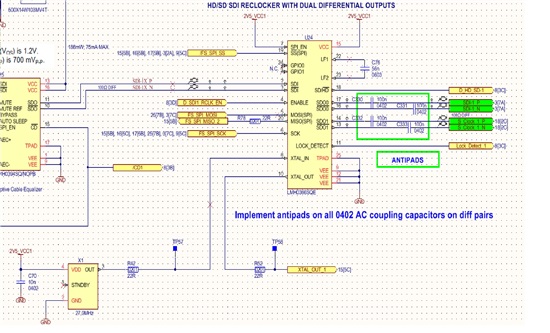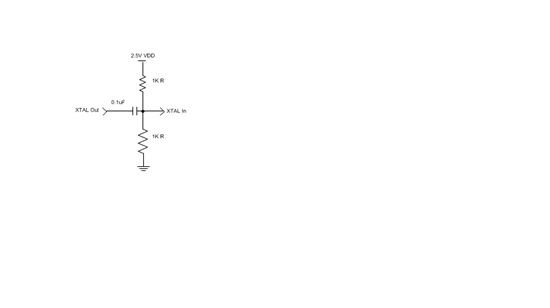Hi ,
Can a single cmos oscillator be used as the 27 MHz reference for multiple reclockers by connecting the XTAL_OUT output of one reclocker to the XTAL_IN input of the next, propagating the 27 MHz reference signal through a cascade of reclockers?
The LMH0366 datasheet states that it can be done by driving the XTAL_IN pin of the first reclocker with a crystal oscillator or 2.5V LVCMOS clock signal ????.
The picture below is that of the 27MHz signal at the XTAL_IN pin of the first reclocker . The next picture is that of the signal at the XTAL_OUT pin of the first reclocker.
How can we make the signal propagate down the cascade ? Are specific register settings required to enable clock cascading??
We are using the LMH0366 in SPI MODE.
REF_CLK_DET = 1 at the first reclocker and 0 at the second reclocker.
Regards.
Hein



